Ear Careers: Location Sound Mixer, Noel Dannemiller
Here’s a mega audio facility for you: the whole freakin’ planet.
That’s where location sound mixer Noel Dannemiller clocks in every day to ply his audio trade. From Greece to Greenland to the Caribbean, and even in his own backyard of Akron, Ohio, Dannemiller keeps extremely busy. And you’ve heard of his clients: the Cleveland Cavaliers, reality series like CBS’ “The Amazing Race” and Animal Planet’s “Ice Cold Gold,” and many more, often leading to audio adventures of the most harrowing order.
Once filled with studio ambitions of his own, Dannemiller took an unexpected turn into location sound mixing. He zigged when everyone else zagged, and now he’s in demand operating a busy practice on his own terms.
We asked Dannemiller to lay out the business approach that’s worked for him. How do you run your audio practice successfully from a home base that isn’t NYC, LA or Nashville? How do you stand your ground in a negotiation? And what myriad mixers, mics, wireless systems, and accessories does a pro sound person bring with them on a big gig? (Hint: It weighs 30 pounds put together, and it’s described in detail below.)
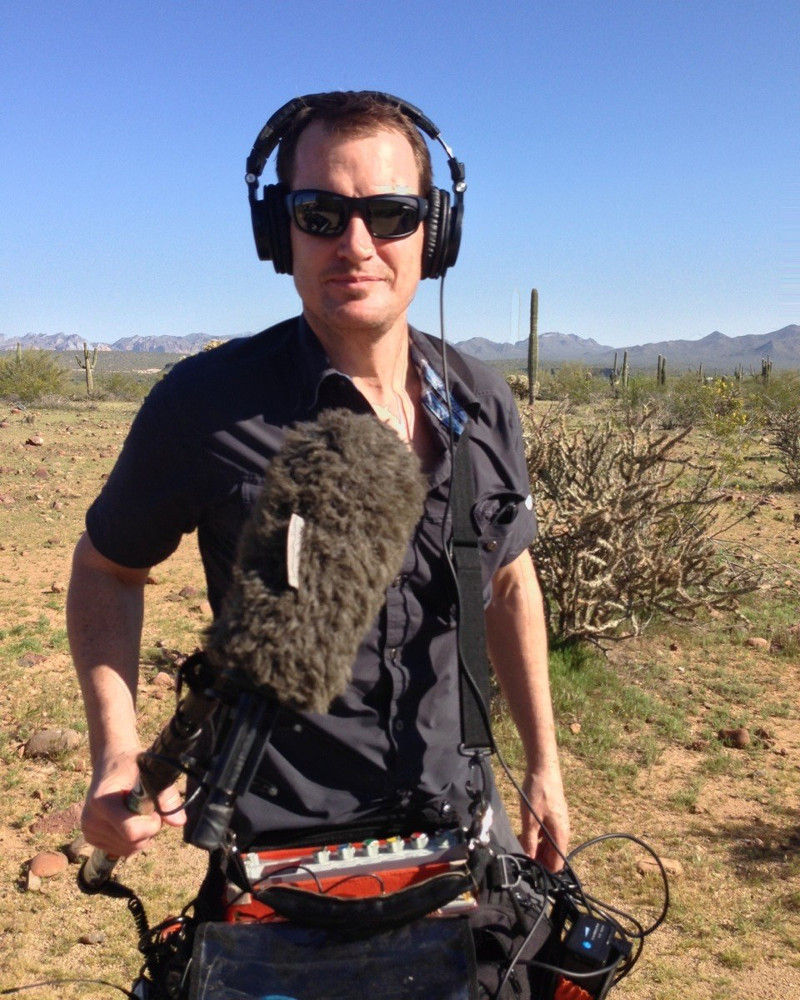
Noel Dannemiller can capture quality sound — ANYWHERE.
Why do you feel location sound mixing is overlooked in the audio profession?
When people think of audio they think music, not dialogue. Recording studios are cool, hip, exciting. I thought I wanted to work in a studio.
I think some audio pros are intimidated by working outside of a studio. Rain, cold, snow, heat, sun, wind, city noise, and people honking their horns because they see a camera. Also, sound is low on the totem pole on location for most shoots. The picture is the priority.
It’s most important when you get to post production. Sound usually is compromised for the camera angle, wardrobe, visual effects, or grumpy talent. It’s up to the location sound mixer to figure out how to overcome these obstacles.
Standing on four inches of ice at five degrees in January for 10 hours is not fun. Its tough, and you can’t complain. You said “yes” to the job.
That’s intense. How did you first become interested in location sound mixing?
My sister sold jingles for a studio and brought me out to a shoot one day and I thought shooting film looked so cool. I was already in college studying Audio Recording at The Ohio State University and I thought film would be a great complement to audio. I then pursued film with the emphasis on location sound. Nobody in film school wanted to do sound, it was perfect.
I did work for Eighth Day Sound for a couple of years touring with The Ramones, James Taylor, Boyz II Men, Tony Bennett, etc. I would Fly the PA, Patch and mic the stage, and mix an opening act. That was a blast, but it didn’t pay very well. I look fondly on those days, but I’m glad they’re behind me.
The best part of working on location is new scenery, new crew, and new subject matter. Every day is a new day. I couldn’t imagine working in a dark studio day in day out. The world is my studio.
Tell us about your business strategy – do you have a location sound mixing “practice”? How is it structured?
I don’t have a strategy other than “working well with others”. Bad attitudes don’t get you the next gig.
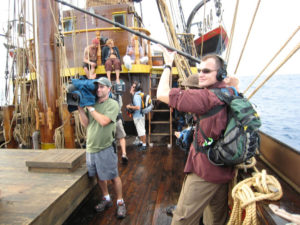
Aquatic audio — keeping the boom upright serious arm strength.
I don’t really pursue gigs. I wait for the phone to ring. Most of my jobs are word of mouth. I don’t buy into online crewing services very often. Most of the gigs posted never come through or my quote was too high. Someone will always do it cheaper.
Sometimes gig are offered to me for a low rate. The production manager tells me how great this project, camera, and people are, and many more jobs are lined up. Production manager says, “Give me a deal on this one, and charge me full rate on the next.” I say, “I’ll charge you full rate for the first and I’ll give you a deal on the next.” There never is “next” in those types of deals.
Why did you decide not to move to LA or NYC? Explain how you sought out opportunities right in your own backyard.
I have always been a homebody. I love where I live. Ask LeBron (James). Akron is home.
In college I started freelancing on commercials and corporate videos. I built up a network of regional people and grew my work worldwide.
I never needed to move to a coast. I would get a call from LA/NYC/Anywhere and they book me for a shoot in Ohio. If they like my work they either book me more or refer me to other productions. I met more people from around the country. They liked my work and me.
Then I started getting calls to travel around the country, then the world. When you get along with people great things happen. It’s not easy to be a sound mixer in Ohio, but I like a challenge.
I still live in the same neighborhood where I grew up.
You’ve worked in some pretty extreme environments, like in Greenland for Animal Planet’s “Ice Cold Gold.” What is glorious about such assignments, but what also makes them grueling?
I’ve been extremely fortunate to have been able to travel around the world multiple times on great productions. When I get a call and they say, “Do you want to go to Greenland and live in a tent on a glacier for 3 months?” I reply “Who wouldn’t? Let’s go!” Or, “Do you want to work in the Caribbean in February?” Me: “Hell Yes!” I love going and learning about people and culture. You don’t get that in a studio.
We were in Greece sleeping on the streets for a competition reality show. A fierce rainstorm woke us up. We had to start shooting and follow our competitors. The rain didn’t stop. The water knocked out our camera. We had a backup. We kept shooting. It kept raining. We were soaked.
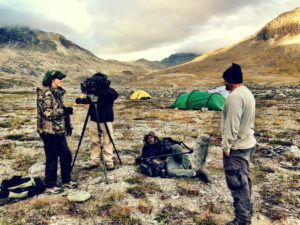
Mean in Greenland.
We caught a train to the next city. I stripped down to my underwear on a public train. Hung my clothes out the window to dry. Quick drying clothes are a must. My clothes dried out, I got dressed. We came to our stop and started shooting again. The rain didn’t stop, and we were soaked again. Even in the worst moments these experiences are awesome.
We did a six-mile hike in Greenland with our gear. Over Boulder fields, scree slopes, ice cold river crossings, rain and cold. I had to carry about 60 lbs. between my mixer bag and backpack.
Over the next three days of shooting at our marooned location. We ran low on food and jet boil hot stoves gas. It was ramen noodles for breakfast, lunch and dinner. The crew was tired and angry, but it was one of the most beautiful locations I have ever been. I definitely earned my man card on that gig.
What is your “Big” package and when do you use it?
My main package consists of:
Zaxcom Nomad 12
4 channels of Zaxcom QRX100 wireless receivers
4 Zaxcom TRX900 wireless receivers
1 Zaxcom micplexer
8 Zaxcom EXRTCD ifb/timecode receivers
1 Zaxcom TRX900/STA150 camera hop transmitter
2 Zaxcom QRX100 receivers for camera hop
1 Remote Audio BDS power distribution
3 Audio-Technica System 10 wireless systems
Audio-Technica ATH-M50x headphones
Orca 34 audio bag
Deneke TSC time code slate.
This bag is used for commercials, reality shows, movies, documentaries, and any other shoot that requires multiple wireless, ifb’s, and time code audio recordings. This bag does it all.

Gear that goes mobile.
I love the Zaxcom system. Everything is controlled through the Nomad 12. The Nomad 12 sends command to tell the wireless transmitters to record, adjust input levels, and go to sleep. Once I place a wireless mic on the talent, with Zaxcom the only reason I have to physically touch the mic and transmitter is to change the battery or adjust the mic.
Small Bag: Sound Devices Mix Pre D, Sennheiser EK3041 receiver, Sennheiser SK3063U Transmitter, Sennheiser SKP30 Transmitter, Audio-Technica System 10 wireless system, Audio-Technica ATH-M50x headphones, and an Orca 28 bag.
This bag doesn’t record audio. All audio is recorded on the camera. I use this bag for “simple shoots” when I only need a boom and a lavalier microphone. Usually sporting events and corporate shoots require this type of setup. This bag is great because its simple and light weight.
Microphones: Audio-Technica BP4073a, Audio-Technica BP4071, Audio-Technica BP4053A, 2 Audio-Technica AT3031, Audio-Technica BP4027, Audio-Technica BP4029, Audio-Technica BP4001, Audio-Technica AT899, Sanken COS-11D, Tram TR-50
I use the Audio-Technica mics for seamless sound across the line of mics. I can switch mics in a scene and the color/tone doesn’t change. Sometime you can hear the sound of a recording change, usually between a wide and tight camera shot. This is because the sound mixer had to change mics to accommodate the shot.
Also, the bang for the buck on Audio-Technica mics is great. Some people spend $2,500 on one mic. I can have one of every pickup pattern for that price. My clients are always happy with A-T’s sound.
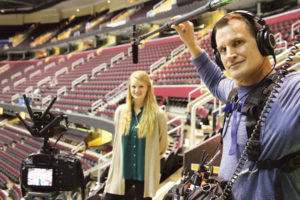
Fully equipped on location.
You said that your criteria for gear is “return on investment.” What are some examples of how you determine that?
Right now is a tough time for wireless microphones. With the FCC getting ready to take away more RF spectrum (600 MHz and up). Most sound mixers are waiting to see what the FCC does when new technology is created.
I have about $12,000 dollars in wireless that will be worthless once the FCC eliminates 600mhz. I am going to continue to use these wireless until I can’t. Then I’ll sell them to another country or make a great door stop.
Audio-Technica’s System 10 has a great wireless option in the 2.4 space. They are very simple and sound great. They’re very versatile. I can use it for talent, a camera hop, or an ifb.
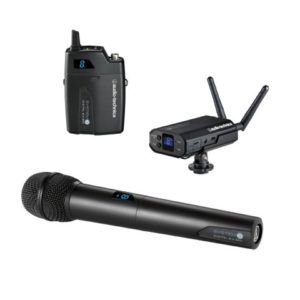
The Audio-Technica System 10 gives Dannemiller a wireless assis
Last week I used the System 10 at a NBA playoff game because of the lack of RF space. There wasn’t an RF coordinator; it was tough to determine what frequencies were going to interfere during the night. There are no second takes in sports. I can’t have a person turn on a wireless mic and screw my audio half way through an interview. That’s where the System 10 comes into play: The receiver and transmitter talk to each other and determine the best frequency and jumps to a new one if needed.
I believe that there is snobbery in the audio community. “What mics do you use?” “I only use X brand.” Sound mixers constantly critiquing your gear or one upping with a new gadget.
State of the art and new gear is great, but you need to be able to make money. If you keep buying the latest and greatest, you better have amazing clients who are willing to pay proper rates for you technology. If you buy great gear, it doesn’t need to be replaced every time something new comes out. Ride it out for the proper life cycle of the gear. Everyone has their own way they like to mix, that’s what’s great about location audio. There are so many options to create the perfect workflow for your style.
Location audio obviously puts some unique strains on the body that are different from mixing and mastering, for example.
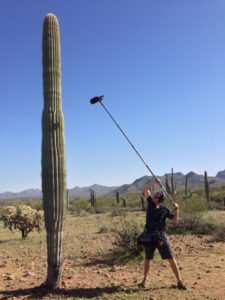
Production sound mixing can be grueling — watch out for audio spikes!
You have to be strong to be a sound mixer. Holding a 12-foot-long boom pole with a long shotgun mic with wind protection can be grueling. On reality shows the audio bag can weigh around 20-25 pounds strapped to you with a harness.
It’s a must to have a great audio harness. I use a Versa-Flex harness. While booming, I constantly adjust my arms and how I hold the boom pole to keep from getting tired. Holding the mic in the same position will wear you out real fast. No matter how long the shot is, you can’t complain about holding the pole. It’s part of the gig.
We’re tired just thinking about it. Are opportunities in this particular field of audio growing, shrinking, or staying level? How could a determined person break into the business?
I’m not sure how to answer this question. There are opportunities for new people, but it’s getting harder to make a buck.
Location sound guys want their own gear, but it’s really expensive. Camera operators want sound guys without gear so they can get the rental money on the sound package. Big shows want sound mixers without gear, because they can get a “deal” from a rental house.
Essentially, every production wants sound for free. That’s the toughest hurdle in the production world: If you “give it away” to a client to get a job, they’ll expect it every time. It’s best to stick to your rate and rental rate with clients. All of my agreements are a handshake deal. I have never been stiffed. Some clients have taken a long to pay, but they honored our agreement. I feel it’s best to ask for a fair rate for you and for your client. The production manager’s job is to beat me down on rate, but I have to stand up for myself. It’s just business, not personal. I actually enjoy those conversations.
- David Weiss
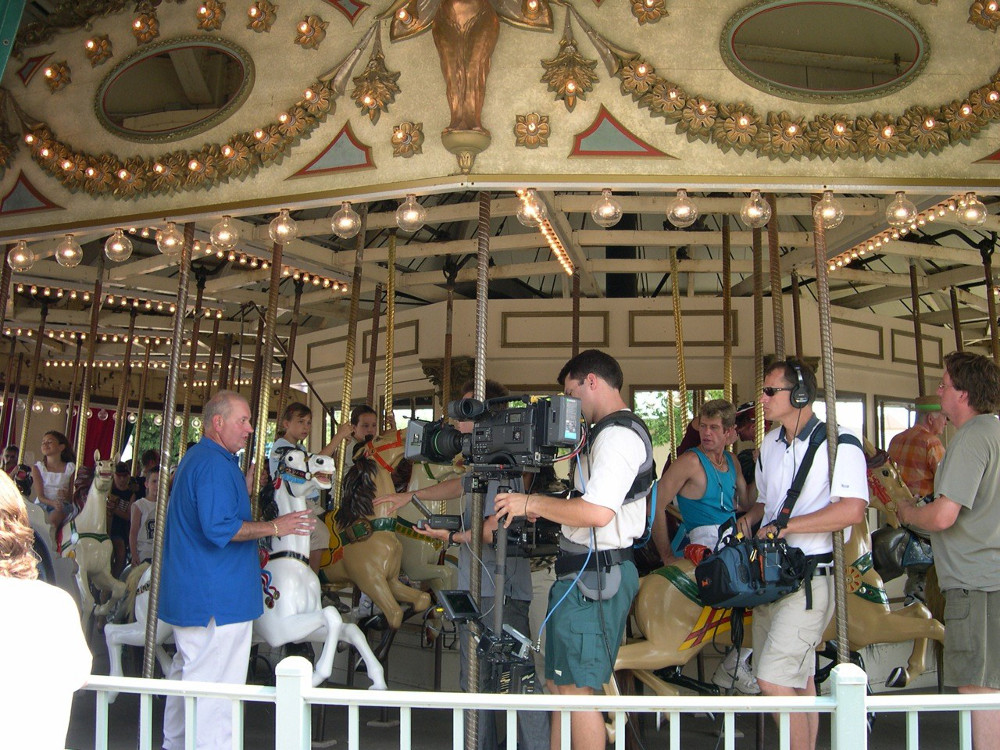
Sound and round.
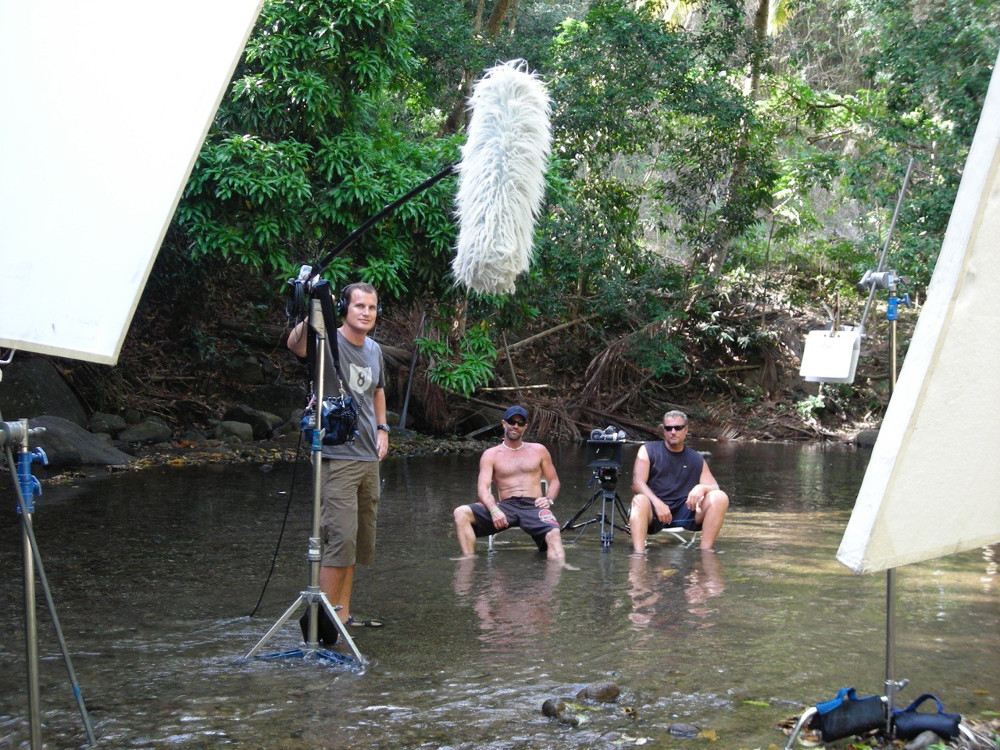
Swamp thing
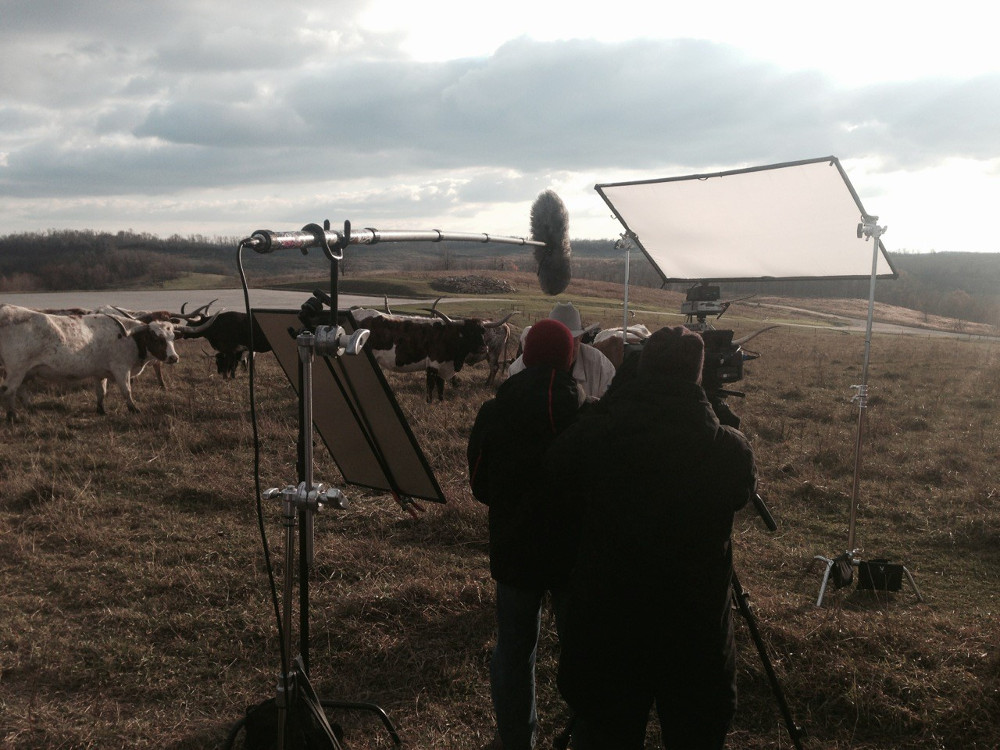
More great outdoors
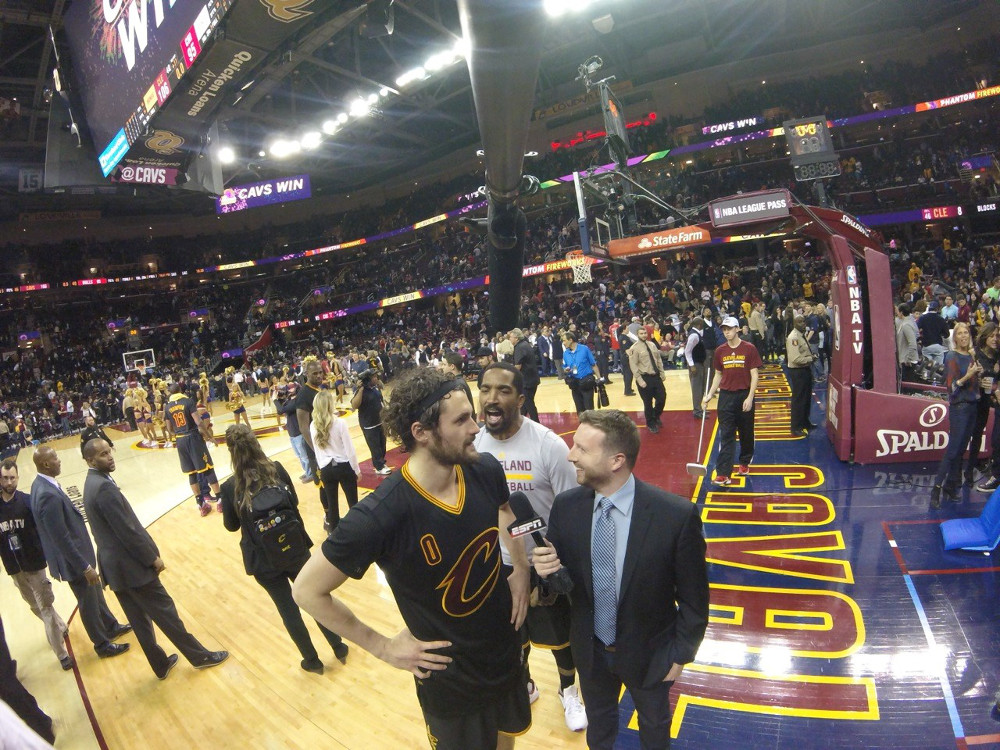
View from the boom
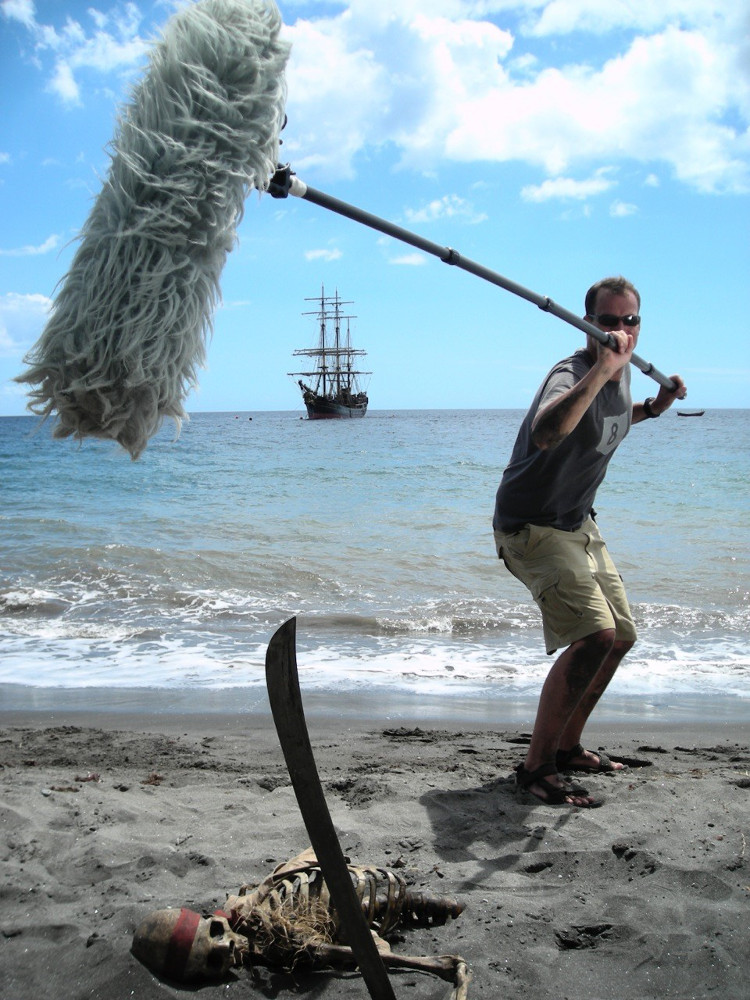
Avast ye mateys!
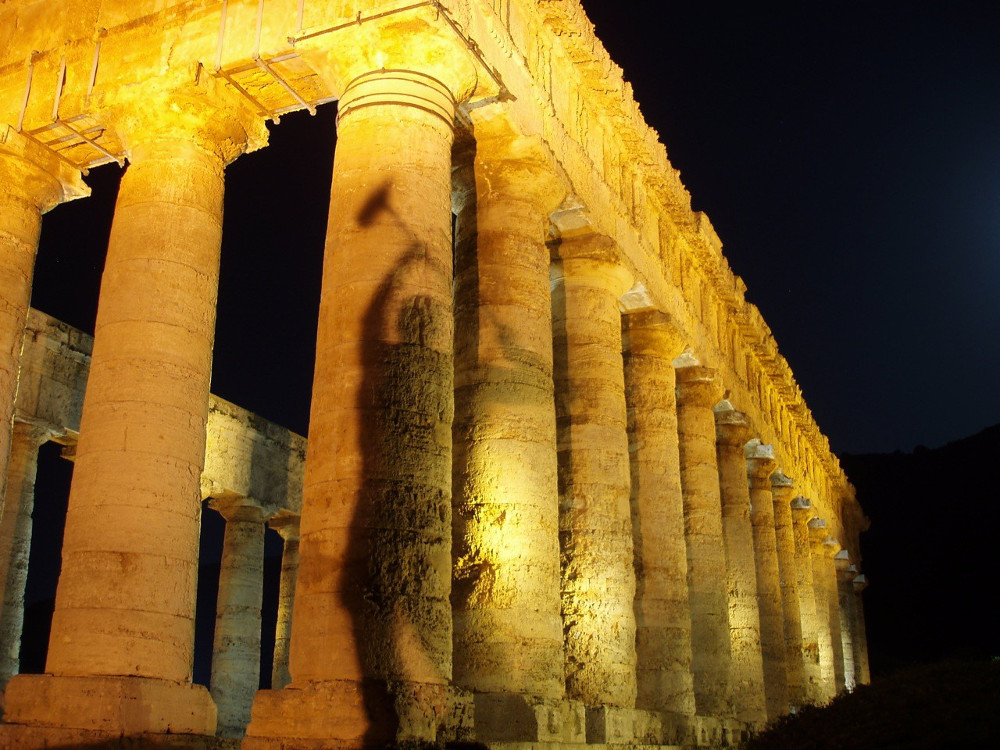
Can you find the Dannemiller in this picture? A self portrait in Sicily.
Please note: When you buy products through links on this page, we may earn an affiliate commission.







Jerry Smith
April 25, 2016 at 11:50 am (8 years ago)I can relate:https://books.google.com/books?id=9OYCAAAAMBAJ&pg=PA12&lpg=PA12&dq=Fred+Weinberg+Music+Man+New+York+Magazine&source=bl&ots=QR2J5MsRlH&sig=Dwf7B1cVdZbQwJYizWnOYLzPP48&hl=en&sa=X&sqi=2&ved=0ahUKEwijrv-5j6rMAhWHVh4KHcYYBV0Q6AEIETAC